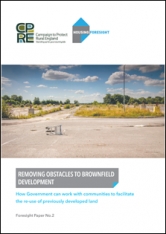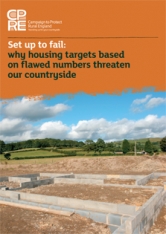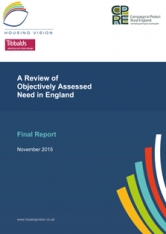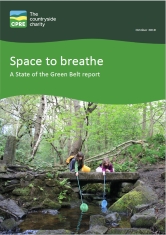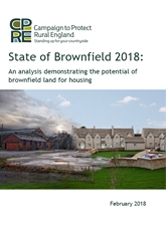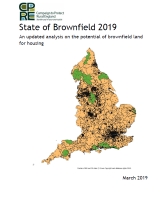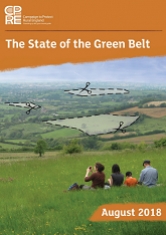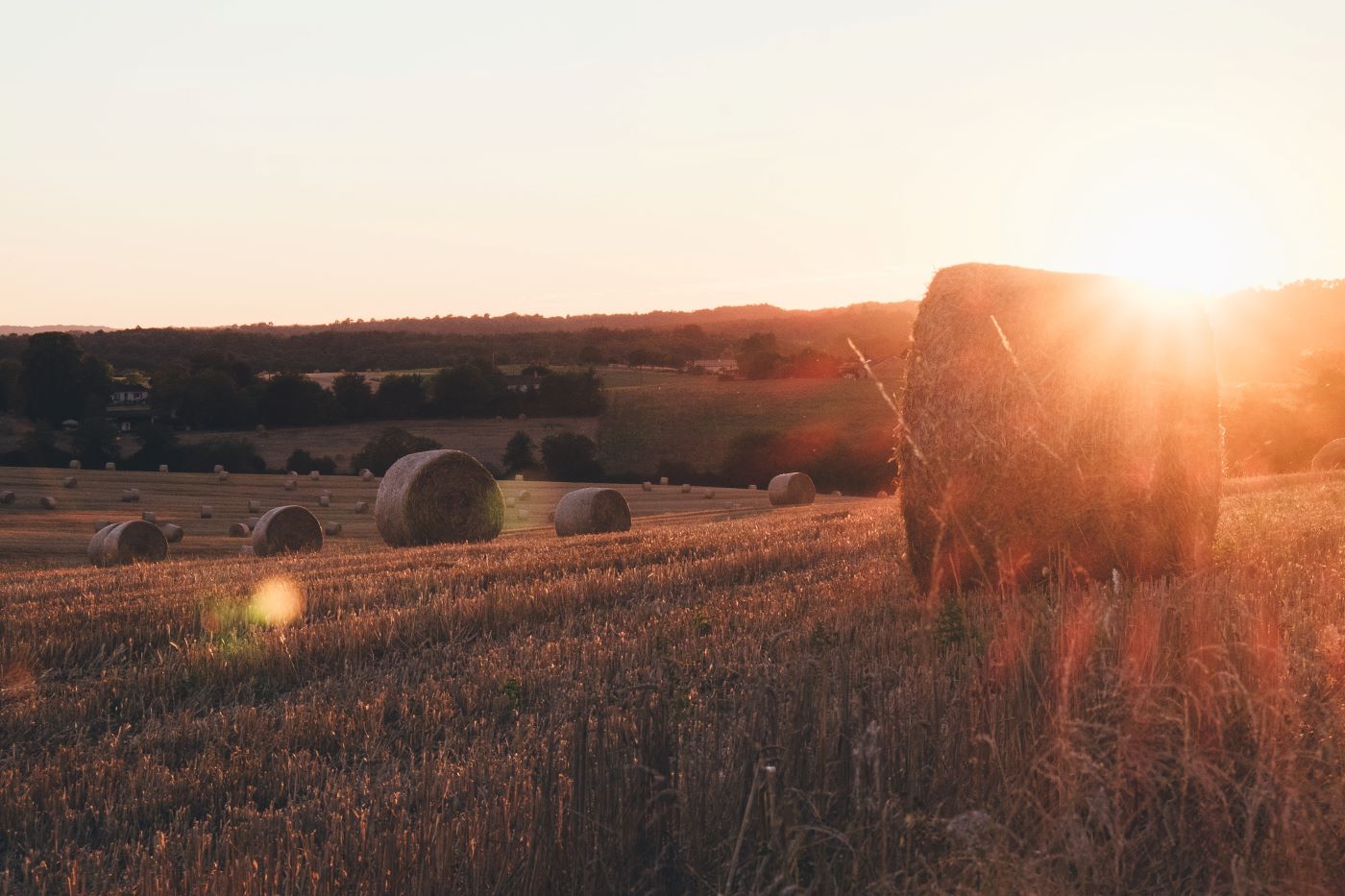Housing and planning
Redefining Affordability - a CPRE Briefing
We all need a stable home we can afford to live in, no matter where we are. To give everyone in the countryside a fair chance in life, we must ensure that there are enough low cost homes in our villages and market towns, whether to rent or buy.
But for too long, we have not built the right kind of homes in rural areas. The problem is only getting worse, with rents and house prices rising steadily and wages failing to keep pace.
This briefing sets out a new definition of ‘affordable’ in national planning policy could help to change this by reconnecting rents and local incomes, so that more homes are available at a price that low-income households can afford to pay.
Removing obstacles to brownfield development
With recent statistics showing that housing development is decreasing on previously developed sites but increasing on the Green Belt, Removing obstacles to brownfield development calls for Government to implement a range of inventive policies to realise the potential of brownfield house building.
The paper calls for:
- the taxation of uncompleted housing for which planning permission has been granted on brownfield land;
- improved funding and assistance for brownfield remediation;
- special planning measures and state intervention to aid redevelopment;
- and the increased use of tax increment financing.
Set up to fail: why housing targets based on flawed numbers threaten our countryside
Our new research has found that housing assessments produced by local authorities (SHMAs) are inaccurate, inflated and unreliable. The housing figures produced by SHMAs are not being balanced with sensible planning for infrastructure, consideration of environmental constraints, and realistic assessments of what housebuilders will be able to deliver.
The full report is also available: Smarter SHMAs: A Review of Objectively Assessed Need in England
Smarter SHMAs: A Review of Objectively Assessed Need in England
This report by Housing Vision with Tibbalds Planning and Urban Design reviews the methodologies used to determine Objectively Assessed Need (OAN) for housing and the problems caused by unclear and unhelpful guidance. It provides solid evidence and recommendations for our report Set up to fail.
A summary of the report is also available: Set up to fail: why housing targets based on flawed numbers threaten our countryside
Space to Breathe
Providing space to unwind, engage with nature - and also grow our food - the Green Belt is the countryside next door for 30 million people in some of our largest and most historic cities. The urgent need to help us address the climate emergency and give people more opportunity to engage with nature means that our Green Belts have never been more important.
Yet this space is under threat like never before: from the impacts of climate breakdown to development in the countryside. CPRE, the countryside charity has published regular reports detailing development proposals on the Green Belt since 2012. This report highlights the unprecedented proposals for building housing in the Green Belt, squandering this valuable asset at a time where it is needed for our own health and wellbeing, and to address the climate emergency, more than ever before.
State of Brownfield 2018
An analysis demonstrating the potential of brownfield land for housing
We have long campaigned for prioritising the use of brownfield land for housing because we believe it stops the waste of precious countryside.
This research examines new brownfield registers, published by 320 local planning authorities in England.
It follows previous work from CPRE, including “From Wasted Space to Living Spaces” in 2014 and brownfield housing capacity research in 2016, which has consistently demonstrated that there is sufficient suitable brownfield land currently available for more than 1 million homes.
This report shows that local planning authorities have identified more brownfield land with space for more than 1 million homes, and that there is brownfield land in places where people want to live.
If this land is used more efficiently, the sites could deliver even more homes – preventing the unnecessary loss of countryside and green spaces.
State of Brownfield 2019
CPRE's annual State of Brownfield report shows that there is enough suitable brownfield land available in England for more than 1 million homes across over 18,000 sites and over 26,000 hectares.
State of the Green Belt 2018
CPRE’s annual State of the Green Belt report shows that there are currently 460,000 homes being planned to be built on land that will soon be released from the Green Belt.
Sustainable Development (Policy)
Brownfield Land
Land is a precious resource, and must be used wisely. CPRE supports a ‘brownfield first, greenfield last’ strategy as a general principle. However, just because a site is brownfield does not mean it should necessarily be developed.
Wherever possible, it is generally better to use already developed urban land and buildings than to build on green fields.
CPRE believes we need to tap this potential [the potential of brownfield sites] while protecting the character and quality of existing residential areas.
It makes social, environmental and economic sense for most new development to occur in built-up areas, where infrastructure and services are already in place, or can easily be provided, rather than in the countryside. Brownfield development is essential for urban regeneration. Done well, it brings homes, jobs and services closer together, reduces car dependence and enhances communities. However, not all previously developed sites should be considered suitable for development. Land important for wildlife, historically significant or that provides valuable open space should be safeguarded from inappropriate development.
What CPRE wants:
- A ‘brownfield first, greenfield last’ approach – to protect the countryside and regenerate urban areas.
- Removal of obstacles to brownfield development - financial support for remediating contaminated land.
- A plan-led approach which responds to the needs and aspirations of local communities.
- Better use of existing buildings – reduction of VAT on building repairs, which deters responsible maintenance and favours demolition and development on greenfields over building re-use and refurbishment.
- Protection for urban open spaces, wildlife habitats and sites of historic importance.
- Local brownfield strategies to tackle brownfield blight, identify opportunities for regeneration and ways to overcome obstacles to brownfield development.
- A national target of at least 75% of residential development and 85% of commercial development to take place on brownfield sites.
Planning
Good land-use planning is the unsung hero of environmental protection. It can encourage urban regeneration, curb urban sprawl, help slow the growth in road traffic, protect the beauty and tranquillity of the countryside and safeguard wildlife habitats.
Effective planning is more important now than ever before with economic pressures and a growing population leading to more development intruding into the countryside.
Precious Green Belt land is being eaten away despite a Government commitment to protect it. Proposed new legislation concerning the planning for major infrastructure projects presents a serious challenge to the integrity of the planning system.
Find out more
• CPRE's policy on brownfield land
• Planning resources
• Planning campaign briefings
The right housing in the right places - CPRE manifesto briefing
We need to save our countryside from unnecessary and damaging development by improving planning policy and guidance.
This is a detailed briefing based on CPRE's manifesto for the 2015 General Election.
